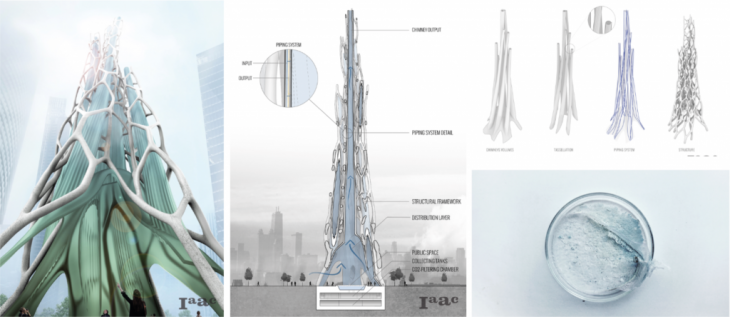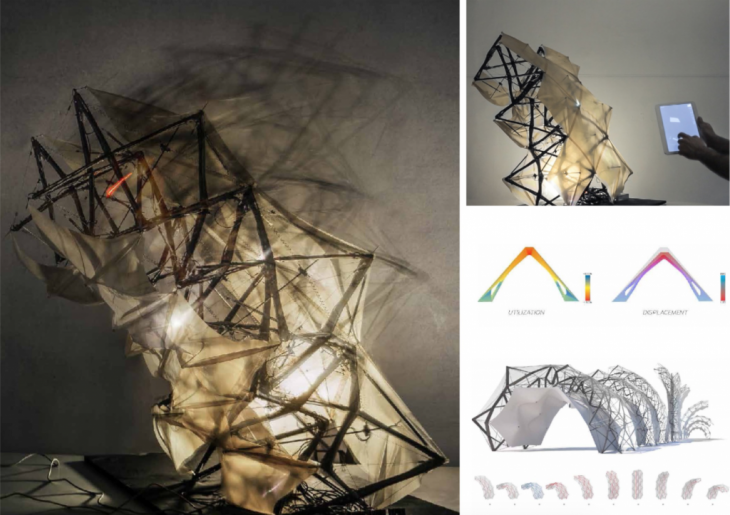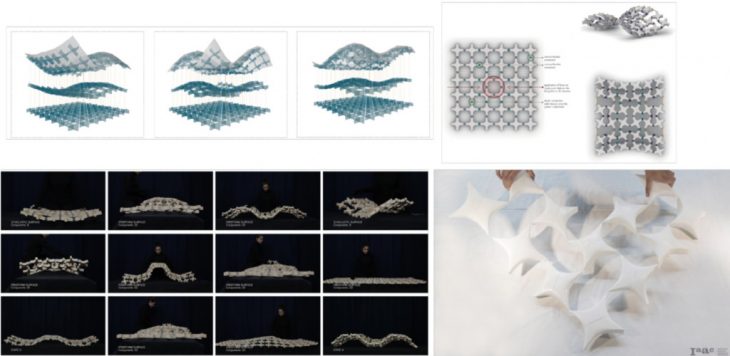DIGITAL MATTER
Senior Faculty: Areti Markopoulou, David Andrés León
Fabrication Assistant: Raimund Krenmüller
Faculty Assistant: Nikol Kirova
 Image Credits: IAAC Digital Matter 2018-19
Image Credits: IAAC Digital Matter 2018-19
The advances of material science, coupled with computation and digital technologies, and applied to the architectural discipline have brought to life unprecedented possibilities for the design and making of responsive, collectively created and intelligent environments.
Over the last two decades, research and applications of novel active materials, together with digital technologies such as Ubiquitous Computing, Human-Computer Interaction, and Artificial Intelligence, have introduced a model of materially Responsive Architecture that presents unique possibilities for designing novel performances and behaviours in architectural space.
Rather than creating buildings that are static, consuming and contaminating, Responsive Architecture presents novel design and manufacturing solutions for dynamic and adaptive buildings that are able to change state and shape, generate resources, minimise negative environmental impact and achieve complexity and high aesthetics through performances that resemble biological and natural organism’s operation.
Through the applications and implications of materially Responsive Architecture we are crossing a threshold in design where physicality follows and reveals information through time and through dynamic configurations. Design is not limited to a finalised form but rather is associated to a performance, where the final formal outcome consists in a series of animated and organic topologies rather than static geometries and structures. This new design paradigm, is characterised by unique exchanges and dialogues between users and the environment, facilitated by all human, material and computational intelligence. It refers to the design and construction of buildings, objects and spaces that are able to reconfigure themselves, in both micro and macro scale, to support environmental changes and users’ needs as well as behavioural and occupational patterns.
Within this context, should we continue constructing rigid and fixed structures?
Or can buildings and cities begin to think?
 Image Credits: IAAC Digital Matter 2016-17
Image Credits: IAAC Digital Matter 2016-17
Understanding the significant need of generating the production of non-rigid, responsive and multi-functional material and construction systems, as well as the need of designing new platforms for interaction among environment, users and built space, the [Digital Matter] Research Line develops case studies on digital and computed matter, exploring intelligent construction systems to be applied at architectural scale.
In collaboration with the Italian Institute of Technology as well as international guest experts in adaptive, biomimetic or smart architecture, [Digital Matter] sets up a multidisciplinary team for developing the new designs, tools and building protocols for Responsive Architecture.
Students will be prototyping physically and designing computationally architectural proposals driven by principles of performance and dynamics.
Digital design drawings and performative prototypes of Buildings, Skins and Structures that are able to think, actuate, respond to environmental forces and interact with user’s needs will be the outcome of the final projects.
Advanced Computational design for dynamic geometries, physical computing, artificial intelligence and thermodynamics simulations will be the tools to generate the Responsive Architecture designs.
Digital fabrication with a focus on robotics, additive manufacturing and functionally graded materials will be explored for the construction and prototyping of the novel intelligent building systems.
The [DM] method of investigation follows a rigorously experimental approach and progresses in complexity from small scale material sampling to the production of 1:1 scale architectural components and prototypes.
 Image Credits: IAAC Digital Matter 2018-19
Image Credits: IAAC Digital Matter 2018-19